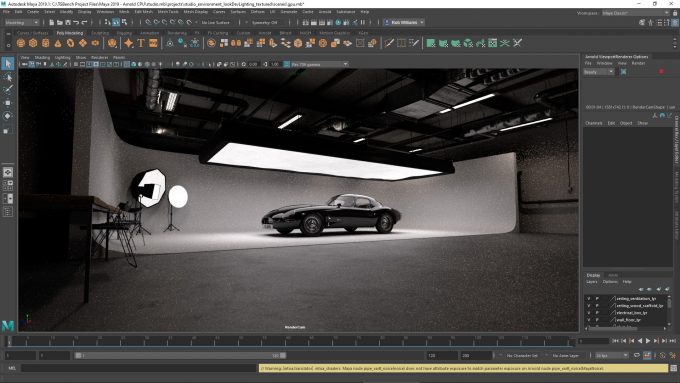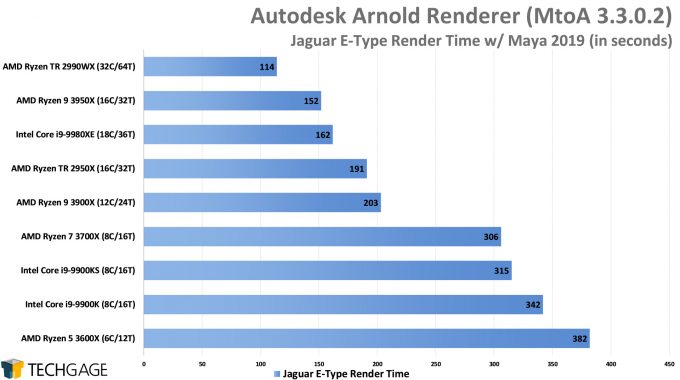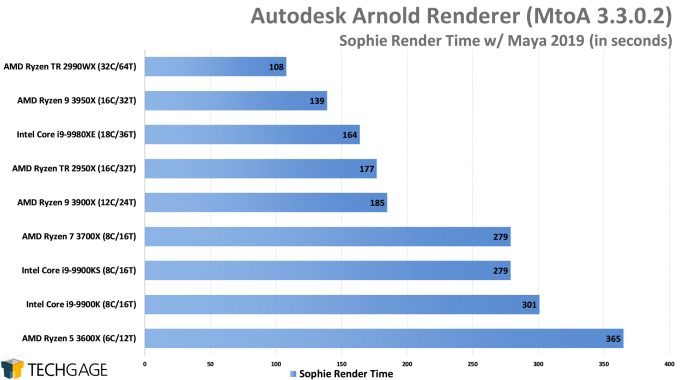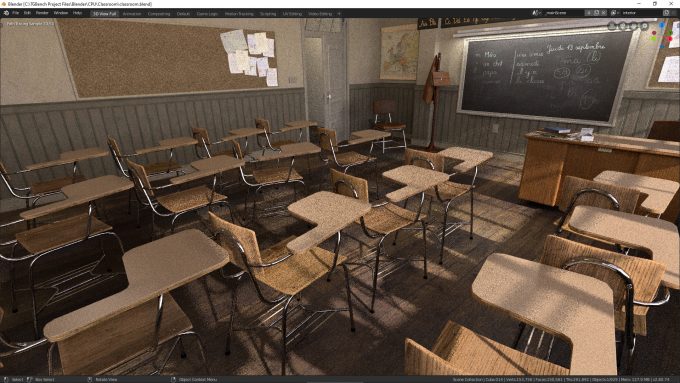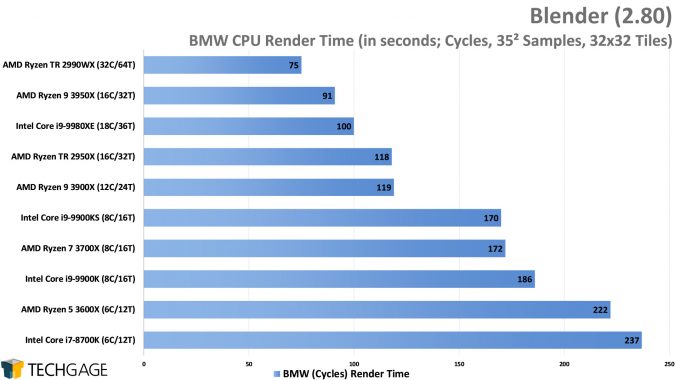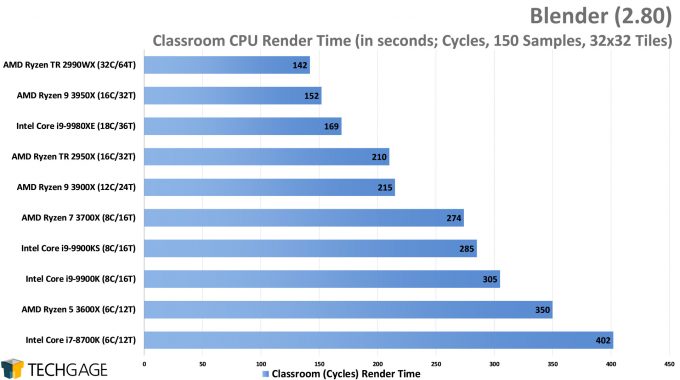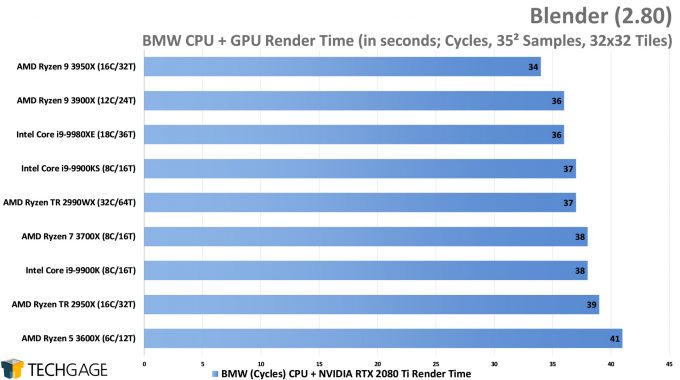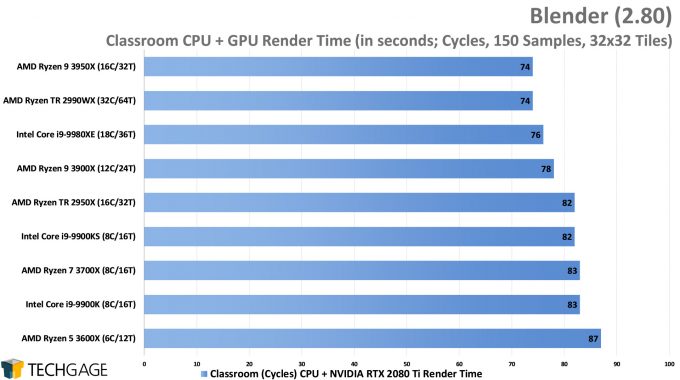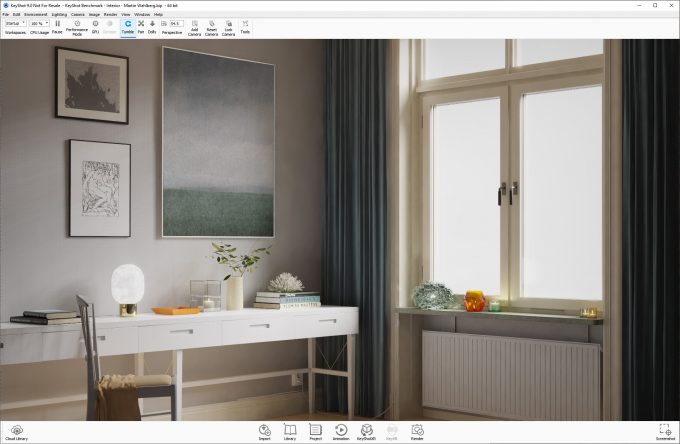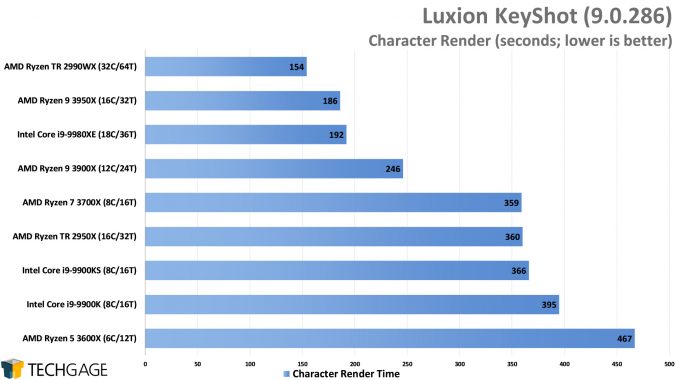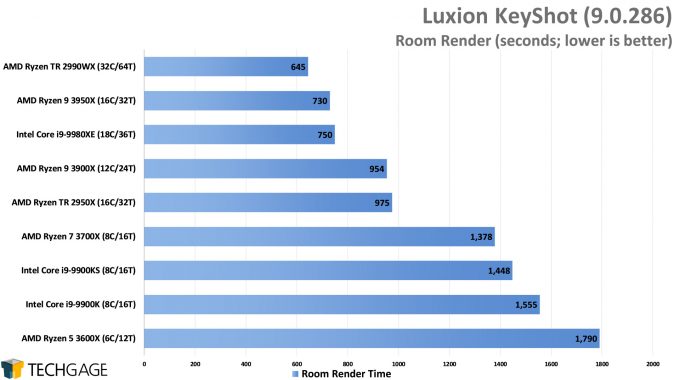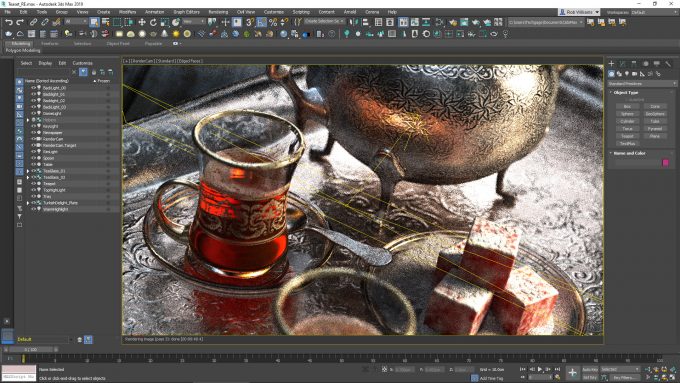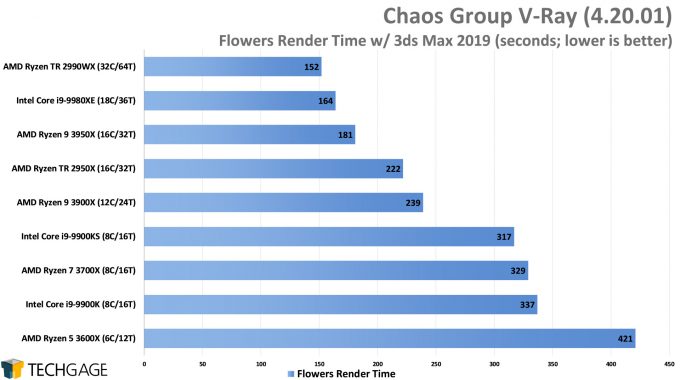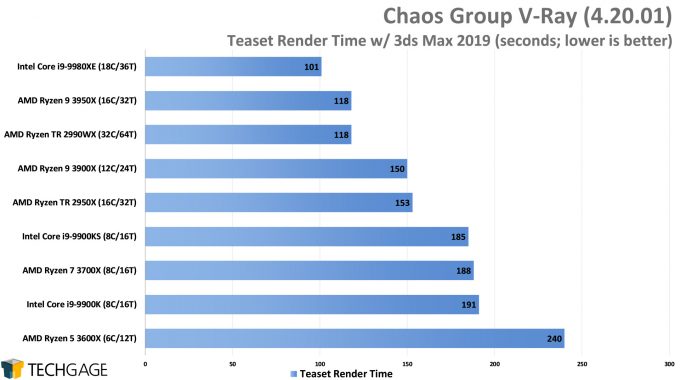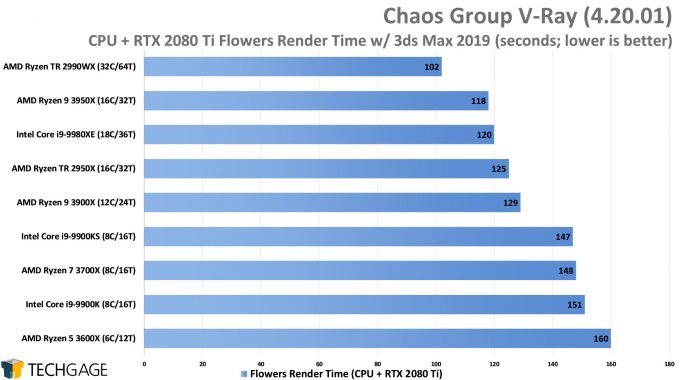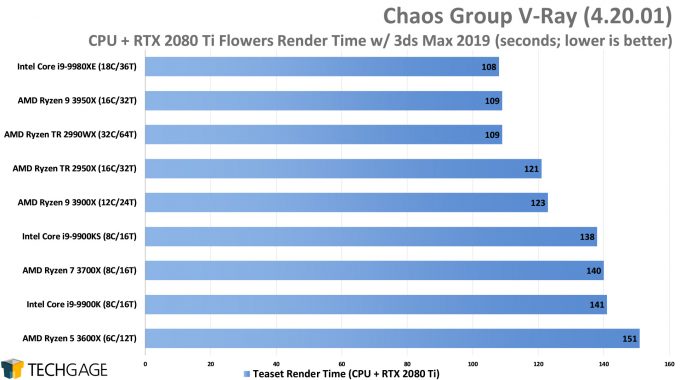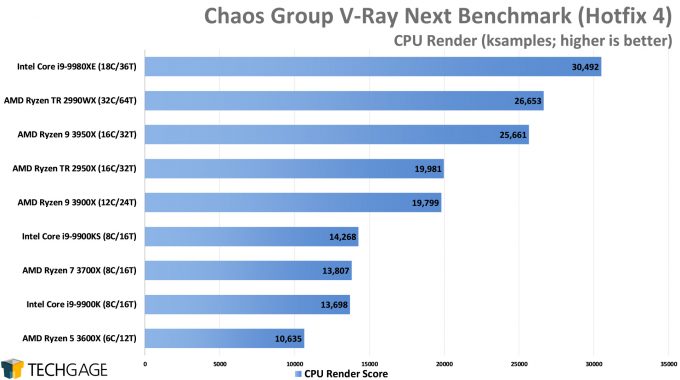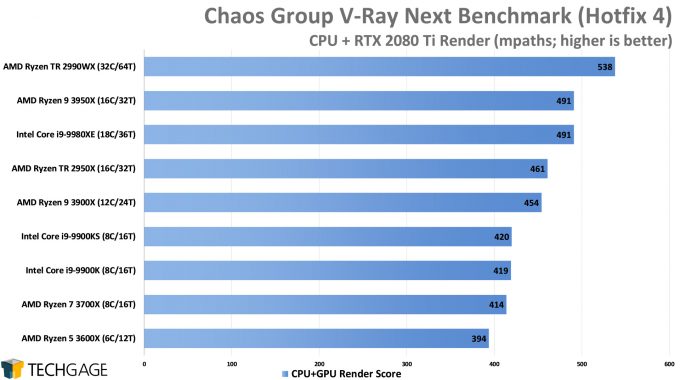- Qualcomm Launches Snapdragon 4 Gen 2 Mobile Platform
- AMD Launches Ryzen PRO 7000 Series Mobile & Desktop Platform
- Intel Launches Sleek Single-Slot Arc Pro A60 Workstation Graphics Card
- NVIDIA Announces Latest Ada Lovelace Additions: GeForce RTX 4060 Ti & RTX 4060
- Maxon Redshift With AMD Radeon GPU Rendering Support Now Available
A Seriously Powerful Sub-$1000 CPU: 16-core AMD Ryzen 9 3950X Review
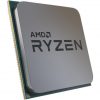
Following-up on our previous quick look at AMD’s sixteen-core Ryzen 9 3950X processor, and having (mostly) finished catching up on benchmarking, we now have a much fuller look at overall performance from AMD’s newest wonder chip on-hand. Join us as we explore all of what this chip is made of across many rendering, encoding, and gaming workloads.
Page 5 – Rendering: Arnold, Blender, KeyShot, V-Ray Next
There are few things we find quite as satisfying as rendering: seeing a bunch of assets thrown into a viewport that turn into a beautiful scene. Rendering also happens to be one of the best possible examples of what can take advantage of as much PC hardware as you can throw at it. This is true both for CPUs and GPUs.
On this page and next, we’re tackling many different renderers, because not all renderers behave the same way. That will be proven in a few cases. If you don’t see a renderer that applies to you, it could to some degree in the future, should you decide to make a move to a different design suite or renderer. An example: V-Ray supports more than just 3ds Max; it also supports Cinema 4D, Maya, Rhino, SketchUp, and Houdini.
Autodesk Arnold
We’ve been picking on the 2990WX a little bit in this article, only because it tends to fall to the back of the pack more than you’d expect a market-leading (core-count wise) desktop processor to. But because of rendering’s obscenely parallel design, that chip is put to great use here, boding good potential for the third-gen Threadripper to truly knock our socks off.
In both renders, the 3950X sat behind the 2990WX, which isn’t too bad at all considering the core-count difference. Or the fact that the 3950X is $750, and the 2990WX is $1700.
Blender
Once again, the 32-core AMD chip leads, with the 3950X placing just behind it. With its two extra cores, the 18-core i9-9980XE can’t keep up to AMD’s newest competitor, and with the i9-10980XE set to cost about $250 more, it seems like Intel is in for a seriously strong fight in the rendering world. But we’ve seen before that adding a GPU can spice things up, so how does that change things here?
These GPU-infused results shake things up a bit, but they don’t exactly create interesting scaling. As we’ve covered before, Blender loves the GPU a lot, so if you design your project from the get-go with the GPU in mind (or even if not), you’re likely to see significant gains vs. the CPU. It is important to note that heterogeneous rendering in Blender isn’t always going to deliver strong gains in performance. In some cases, the GPU on its own will be more efficient; it may not render quite as fast, but it wouldn’t be pinning your CPU to 100% usage for minimal gain, either.
We’ll be upgrading to Blender 2.81 in our testing at some point, but based on our initial experimentation, the overall performance picture won’t change (although there are some improvements with Eevee). 2.81 does add NVIDIA OptiX support for GeForce RTX cards, though, as well as Intel Open Image Denoise for any CPU with SSE4.1. You can check out our in-depth look at regular rendering and viewport performance, as well as a look at RTX performance.
KeyShot
We’ve upgraded to KeyShot 9 with our latest update, a new major version that, like Blender, adds support for NVIDIA’s OptiX ray tracing engine. Its inclusion should mean that scenes will render quicker on the GPU than the CPU, but we’ve been too inundated with benchmarking four different sets of test suites to be able to dig into comparisons – but it’s definitely in the “cards”.
For this article, we’re of course going to stick to the de facto rendering method for KeyShot: CPU. We again see the 2990WX lead the pack, followed directly by the 3950X, and then followed by Intel’s 18-core i9-9980XE. The performance at the top sure looks a lot better than the performance at the bottom here.
Chaos Group V-Ray Next
With our first V-Ray tests, the 3950X repeats a trend it set long ago, and helps occupy one of the top positions. Interestingly, the Teaset render behaved quite differently from the others, with the top Intel chip pulling away further than the 2990WX pulled away in the Flower test. This is another test we introduce the GPU for:
We’re seeing similar patterns as the CPU-only renders, with the 2990WX and 9980XE again flip-flopping their leads. Overall, it if comes between using the CPU only or adding in your GPU, it definitely makes sense to go the heterogeneous route. That said, that assumes you’re using a CUDA-equipped card, since Radeons are unsupported.
Here’s the standalone V-Ray benchmark’s take on performance:
Even the standalone benchmark shows the 2990WX and 9980XE trading bows, depending on the mode used. Ultimately, if rendering is really important to you, you probably don’t want to skimp on either the CPU or GPU, but depending on your workflow, one can definitely be more important than the other.
Support our efforts! With ad revenue at an all-time low for written websites, we're relying more than ever on reader support to help us continue putting so much effort into this type of content. You can support us by becoming a Patron, or by using our Amazon shopping affiliate links listed through our articles. Thanks for your support!




